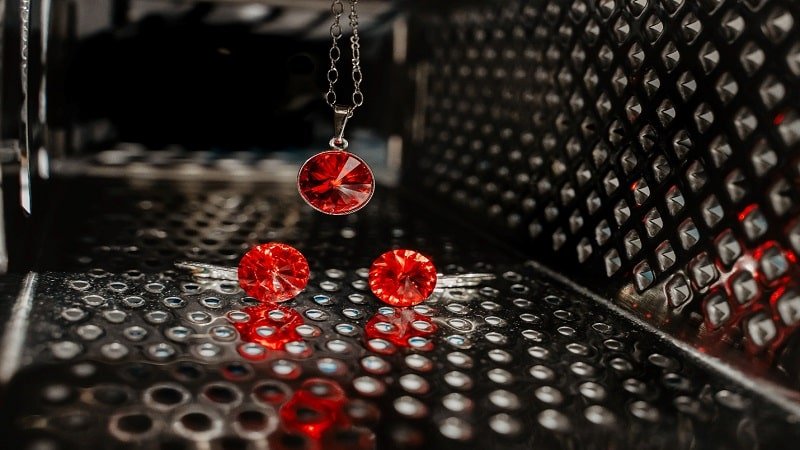Where is Red Beryl Mined?

Where is Red Beryl Mined?
Red beryl is the rarest gemstone in the world that captivates anyone who glances at it. You may confuse it for ruby or garnet because of its red color, but aside from color they both have nothing in common. Red beryl is the variety of the beryl mineral species like emeralds, while rubies are related to sapphire.
Emerald is not its only relative; another gemstone connected with the beryl family is the aquamarine.
Since red beryl is so rare, people have just started to pick something more expensive and rare than gold or a diamond, and believe us; it is much more costly than a diamond. Red beryl is not easy to find, and only a handful of people have ever had a chance of wearing the stone in jewelry form.
This is why the mining sources have just been discovered in certain regions, and that is why the demand has not yet reached its potential capacity since people are not aware that a ‘red beryl’ is mined.
Mining Sources of Red Beryl
Red beryl is often mistaken for ruby and garnet because of the similar shade of deep red. But, what makes it different is that it forms in crystals which require a specific geochemical environment. This means that the occurrence of red beryl determines the geographical regions where its mines can be found.
Since red beryl occurs in the shape of hexagonal crystals, which can be several meters high. The gemstone is formed when groundwater mixes with a volcanic rock, which will only be found in areas with active or dormant volcanoes. That limits the places in the world due to this geographical feature.
Red beryl is mined in only one country globally, which is the United States of America. Even in the country, the mines are located in specific regions such as the Wah Wah Mountains of Beaver County, Sierra County, New Mexico, Paramount Canyon, and Round Mountain.
Wah Wah Mountains of Beaver County
Wah Wah Mountains of Beaver County, located in western Utah, are one of the leading mining sources of red beryl. The gemstone was first discovered in Utah only in 1904, which is quite early compared to the official mining initiation process for silver and platinum that occurred towards the end of the 20th century. Wah Wah Mountains are the hub of red beryl crystals because of their geochemical environment, meaning groundwater mixed in with volcanic rock left from previous volcanic eruptions.
Did you know that the Utah Geological Survey estimated that one crystal of red beryl is found after 150,000 gem-level diamonds are excavated? That means finding red beryl of gemstone quality even in regions that are ideal for its formation is extremely rare and takes decades to form. Usually, the crystals of red beryl that are found are only a few millimetres in size. This means they are too small to be faceted.
According to an article from the Gemological Institute of America, only 63,000 carats of red beryl have been mined since 2003, which means a century after its discovery.
Mexico
The only other country besides Utah in the United States of America, which has significant mines of red beryl, is Mexico. Mexico also shares similar geography to Utah with volcanic rocks and groundwater, allowing beryl to obtain that deep red color. There is no meaningful information on the location of where red beryl is mined within Mexico. But that could be accounted for because red beryl is rare on its own, and not all red beryl crystals that are mined are of gem quality. This means that not all red beryl mined makes it to the market and into the hands of consumers.
The History of Discovering Red Beryl Mines
As you know by now, that red beryl had occurred in the year 1904. But, that was all due to someone reporting an occurrence of a crystal spine spotted in the Thomas Range within the Juab County in western Utah, USA. A bookkeeper discovered by the name of Maynard Bixby, who had joined the career of mining. When he discovered the cave, he named red beryl as ‘bixbite.’ This was done to honor their finder, Alfred Eppler.
But the gemstone was eventually named red beryl because the previous term bixbite fell out of favor and became discredited by CIBJO. The reason behind this decision was that Maynard Bixby had discovered another mineral, namely the black manganese iron oxide, in 1987, which he had named ‘bixbyite’. Both bixbite and bixbyite and markedly similar in pronunciation, confusing gem collectors and mining companies.
The takeover of the Red Beryl Mine
In 1976, the Harris family acquired the mine that contained gem-quality crystals of red beryl, and it stayed under their ownership for the next 18 years. In 1994, they signed a lease with Kennecott Exploration Company for three years. This move allowed the mine to be correctly mapped and sampled so that its potential could be appropriately gauged.
But, this company could not achieve their goal, and only a year later, another company decided to intervene, namely Gemstone Mining Inc. They decided to extend this lease at the cost of a whopping $10 million.
Our Final Thoughts
Red beryl mines have changed hands frequently, with people trying their best to acquire gem-quality crystals that would sell for thousands of dollars each. But, the world fails to realize the value of this gemstone, which is the only one that forms in the shape of hexagonal crystals. Despite, that you would have noticed that there isn’t enough publicity about the red beryl mines in the USA and Mexico.